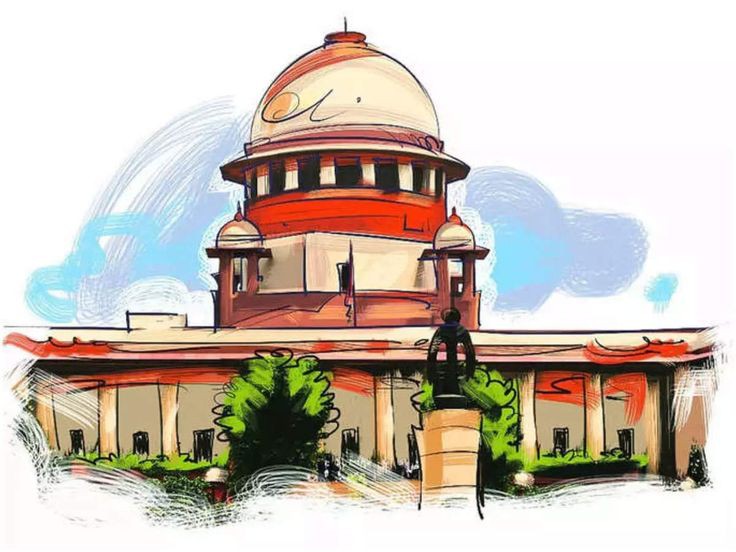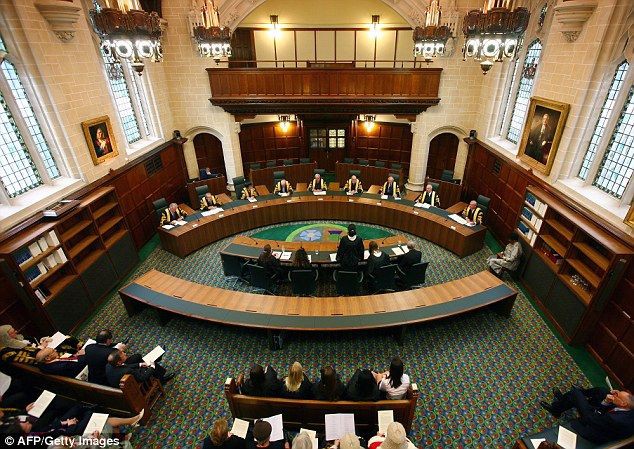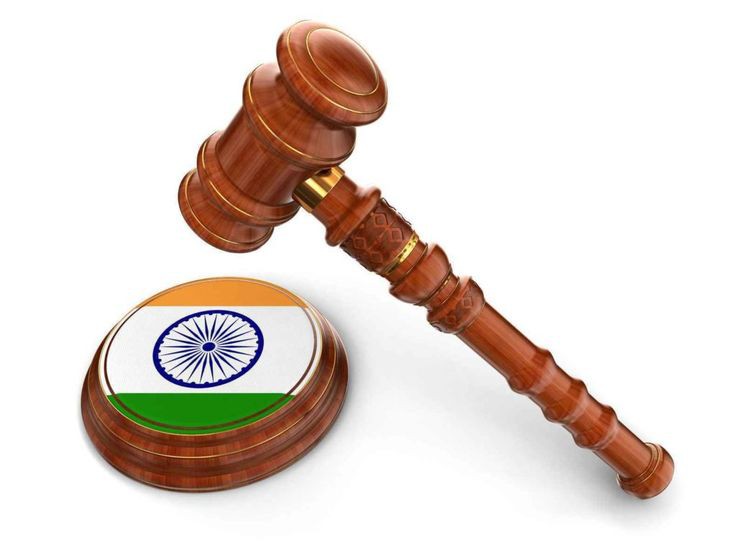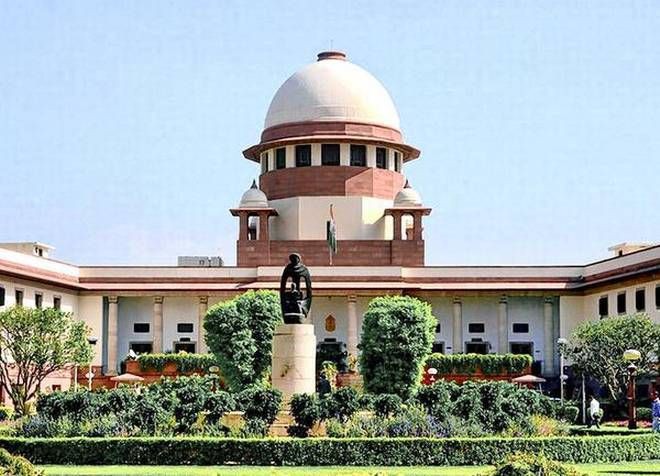The judiciary is often referred to as the guardian of the Constitution, ensuring that the principles enshrined within it are upheld. In India, the judiciary has taken an active role in safeguarding these principles, leading to the phenomenon known as judicial activism. Judicial activism has played a crucial role in shaping the legal and social landscape of India, influencing key areas such as fundamental rights, environmental protection, and social justice. This blog post delves into the concept of judicial activism in India, exploring its historical background, key features, landmark cases, impact, and future prospects.

Table of Contents
ToggleWhat is Judicial Activism?
Judicial activism refers to the proactive role played by the judiciary in interpreting and enforcing the Constitution and laws of the land. It involves judges stepping beyond their traditional role of adjudicating disputes to actively shaping policy and addressing social issues. Judicial activism often arises when the judiciary perceives a failure or inaction on the part of the legislative and executive branches of government, thereby stepping in to fill the void and protect citizens’ rights. This activism is characterized by innovative judicial interpretations and the issuance of directives that have far-reaching implications for society.
Historical Background
The concept of judicial activism, though more prominent in recent decades, has its roots in the early years of the Indian judiciary. The judiciary’s role as an active participant in governance can be traced back to several landmark cases that set the precedent for judicial intervention in public matters. One of the earliest instances was the Keshavananda Bharati case (1973), where the Supreme Court asserted its power to review and strike down constitutional amendments that violated the basic structure of the Constitution. This case laid the foundation for judicial activism in India, emphasizing the judiciary’s role as a guardian of constitutional principles.
The Role of the Judiciary in India
India’s judiciary is a complex and multi-tiered system comprising the Supreme Court at the apex, followed by High Courts in each state, and subordinate courts at the district and local levels. The judiciary’s primary role is to interpret laws, adjudicate disputes, and protect fundamental rights. The Indian Constitution grants the judiciary significant powers, including the power of judicial review, which allows courts to invalidate laws and executive actions that violate constitutional provisions. This constitutional mandate positions the judiciary as a crucial player in ensuring justice and upholding the rule of law.

Judicial Activism vs. Judicial Restraint
Judicial activism and judicial restraint represent two contrasting approaches to judicial decision-making. Judicial activism involves an assertive and proactive stance by judges, where they interpret laws expansively and engage in policy-making to address social issues.
In contrast, judicial restraint emphasizes a conservative approach, where judges limit their role to interpreting laws as written and defer to the decisions of the legislative and executive branches.The debate between judicial activism and judicial restraint is ongoing, with proponents of judicial activism arguing that it is essential for protecting rights and ensuring justice, while critics contend that it leads to judicial overreach and undermines democratic processes. Notable legal scholars such as Fali S. Nariman and Soli Sorabjee have weighed in on this debate, highlighting the need for a balanced approach that respects the separation of powers while ensuring justice.
Key Features of Judicial Activism in India
One of the most significant features of judicial activism in India is the Public Interest Litigation (PIL) mechanism. PIL allows individuals or groups to file petitions on behalf of those who cannot approach the court themselves, often in matters concerning fundamental rights, environmental protection, and social justice. This mechanism has democratized access to justice, enabling marginalized and disadvantaged sections of society to seek redressal for their grievances.Another key feature is the suo moto actions taken by courts, where judges initiate proceedings on their own accord based on media reports or letters from citizens. These actions demonstrate the judiciary’s proactive stance in addressing issues of public concern without waiting for formal complaints or petitions.
The power of judicial review is another cornerstone of judicial activism. This power allows courts to examine the constitutionality of laws and executive actions, ensuring that they do not violate fundamental rights or constitutional principles. Judicial review has been instrumental in striking down arbitrary and unjust laws, thereby upholding the rule of law.

Landmark Cases of Judicial Activism in India
Several landmark cases illustrate the impact of judicial activism in India.
The Keshavananda Bharati case (1973), as mentioned earlier, established the basic structure doctrine, asserting that certain fundamental features of the Constitution cannot be altered by amendments. This case was pivotal in maintaining the sanctity of the Constitution and preventing its misuse.
The Maneka Gandhi case (1978) expanded the scope of personal liberty and fundamental rights under Article 21 of the Constitution. The Supreme Court ruled that the right to life and personal liberty is not limited to mere physical existence but encompasses a wide range of rights essential for leading a dignified life. This judgment has had far-reaching implications for protecting individual freedoms and ensuring justice.
The Vishakha Guidelines (1997) are another example of judicial activism in action. In response to the lack of legislative measures to address sexual harassment at the workplace, the Supreme Court issued guidelines to protect women’s rights and ensure a safe working environment. These guidelines were later codified into law through the Sexual Harassment of Women at Workplace (Prevention, Prohibition, and Redressal) Act, 2013.
The S. R. Bommai case (1994) is significant for its implications on federalism and state governance. The Supreme Court laid down the principles governing the use of Article 356 of the Constitution, which allows for President’s Rule in states. The court emphasized that such power should be exercised sparingly and with caution, preventing its misuse for political purposes.

Impact of Judicial Activism
Judicial activism has had both positive and negative impacts on Indian society and governance. On the positive side, judicial activism has played a crucial role in protecting fundamental rights, promoting social justice, and ensuring accountability of the executive and legislative branches.
It has led to landmark judgments that have transformed lives and brought about significant societal reforms.For instance, judicial activism has been instrumental in addressing issues such as environmental protection. Cases like the Ganga Pollution case have resulted in comprehensive directives aimed at cleaning and preserving the river, highlighting the judiciary’s role in environmental jurisprudence.
Similarly, in the realm of social justice, the Right to Food case has ensured that the government takes proactive measures to address hunger and malnutrition, demonstrating the judiciary’s commitment to upholding the right to life and dignity.However, judicial activism has also faced criticisms. Critics argue that it sometimes leads to judicial overreach, where courts encroach upon the domains of the executive and legislature.
This encroachment can undermine democratic processes and lead to a concentration of power in the judiciary. Additionally, the proactive stance of the judiciary can result in delays in the justice delivery system, as courts take on an increasing number of social and policy-related cases.
Perspectives on Judicial Activism
Views on judicial activism vary widely among legal experts, politicians, and the public.
Fali S. Nariman, a renowned jurist, has defended judicial activism, arguing that it is essential for protecting citizens’ rights and ensuring justice in cases where the other branches of government have failed.
Soli Sorabjee, another prominent legal scholar, has emphasized the need for judicial activism to be balanced with judicial restraint, ensuring that the judiciary does not overstep its constitutional mandate.Political leaders often have mixed views on judicial activism, depending on their experiences with the judiciary’s interventions.
Some appreciate the judiciary’s role in upholding the rule of law and protecting rights, while others criticize it for interfering in policy matters and overstepping its boundaries. Public opinion is similarly divided, with many citizens valuing the judiciary’s role in addressing grievances and ensuring justice, while others express concerns about judicial overreach.
Challenges and Criticisms
One of the primary challenges associated with judicial activism is the risk of judicial overreach.
When courts take on roles traditionally reserved for the executive and legislature, it can lead to a blurring of the separation of powers, a fundamental principle of democratic governance. This overreach can undermine the functioning of elected bodies and disrupt the balance of power.Another challenge is the accountability and transparency of the judiciary.
Unlike elected representatives, judges are not directly accountable to the public, raising concerns about the lack of checks and balances on their decisions. Ensuring transparency in judicial processes and decision-making is crucial for maintaining public trust in the judiciary.
The proactive stance of the judiciary can also contribute to delays in justice delivery. As courts take on an increasing number of social and policy-related cases, the backlog of cases can grow, leading to delays in adjudicating disputes and delivering justice. This delay can undermine the effectiveness of the judiciary and the principle of timely justice.

Case Studies
Environmental Protection:
Judicial activism has been instrumental in addressing environmental issues in India. The Ganga Pollution case is a notable example where the judiciary issued comprehensive directives to clean and preserve the river, highlighting its proactive role in environmental jurisprudence. Similarly, the Vellore Citizens Welfare Forum case addressed industrial pollution and its impact on public health, leading to significant reforms in environmental regulations.
Social Justice:
In the realm of social justice, judicial activism has played a crucial role in protecting the rights of marginalized and disadvantaged sections of society. The Right to Food case is a significant example where the Supreme Court directed the government to ensure food security for all citizens, emphasizing the right to life and dignity. Similarly, the Narmada Bachao Andolan case addressed the displacement of people due to dam construction, highlighting the judiciary’s role in safeguarding the rights of vulnerable communities.
Economic reforms
Judicial activism has also impacted economic policies and reforms. The Vodafone tax case is a notable example where the judiciary intervened in matters related to tax policies and corporate governance,In this case, the Supreme Court ruled in favor of Vodafone, stating that the government could not impose retrospective tax demands, thereby ensuring clarity and stability in tax policies for foreign investors.
Reports and Studies on Judicial Activism
Various reports and studies have analyzed the impact and scope of judicial activism in India. The Law Commission of India has published several reports discussing the need for a balanced approach to judicial activism, emphasizing that while it is crucial for protecting rights and ensuring justice, it must not overstep constitutional boundaries.
One such report, the 245th Law Commission Report, delves into the nuances of judicial reforms and the role of judicial activism in enhancing the efficiency of the judicial system.Think tanks like PRS Legislative Research and the Vidhi Centre for Legal Policy have conducted extensive studies on judicial activism, highlighting both its positive impacts and potential drawbacks. These studies underscore the importance of maintaining a balance between judicial activism and judicial restraint to ensure that the judiciary remains an effective guardian of constitutional principles without undermining democratic processes.

The Future of Judicial Activism in India
Emerging Trends:
.As India continues to evolve, so does the nature of judicial activism. Emerging trends include the increasing use of technology and social media by the judiciary to enhance transparency and accessibility. For instance, live-streaming of court proceedings and digital filing of cases are becoming more prevalent, making the judicial process more open and inclusive.
Recommendations for Balance:
- Enhancing Judicial Accountability: Implementing measures to ensure that judges are accountable for their decisions while maintaining judicial independence.
- Promoting Judicial Restraint: Encouraging judges to exercise restraint and avoid overstepping into the domains of the legislature and executive.
- Strengthening Judicial Infrastructure: Investing in the judicial infrastructure to reduce case backlogs and ensure timely justice.
Role of Young Lawyers and Activists:
The future of judicial activism also depends on the role played by the new generation of lawyers and activists. By advocating for justice, upholding constitutional values, and promoting legal literacy, young lawyers and activists can contribute to a more robust and dynamic judicial system.
Conclusion
In summary, judicial activism in India has played a pivotal role in shaping the nation’s legal and social landscape. From landmark cases like Keshavananda Bharati and Maneka Gandhi to the formulation of Vishakha Guidelines and interventions in environmental and economic matters, judicial activism has been instrumental in protecting rights, promoting social justice, and ensuring accountability. However, it is essential to strike a balance between judicial activism and judicial restraint to uphold the principles of democracy and the rule of law.

FAQs
1.What is judicial activism?
Judicial activism refers to the proactive role played by the judiciary in interpreting and enforcing the Constitution and laws, often stepping beyond traditional adjudication to address social issues and shape policy.
2.How does judicial activism differ from judicial restraint?
Judicial activism involves an assertive and proactive approach by judges, while judicial restraint emphasizes a conservative approach, limiting judicial intervention and deferring to the legislative and executive branches.
3.Can judicial activism undermine democracy?
While judicial activism can protect rights and ensure justice, it can also lead to judicial overreach, undermining the separation of powers and democratic processes.
4.What are some landmark cases of judicial activism in India?
Notable cases include Keshavananda Bharati (1973), Maneka Gandhi (1978), Vishakha Guidelines (1997), and S. R. Bommai (1994), each having a significant impact on constitutional principles and societal reforms.
5.How does judicial activism affect the balance of power in India?
Judicial activism can impact the balance of power by ensuring executive and legislative accountability, but it can also lead to tensions between the branches of government if perceived as overreaching.
6.What are the criticisms of judicial activism?
Criticisms include concerns about judicial overreach, lack of accountability, and potential delays in justice delivery due to the judiciary taking on an increasing number of social and policy-related cases.
References
1.Supreme Court of India: [Judicial Activism in India]
2.PRS Legislative Research: [Public Interest Litigation in India]
3.Law Commission of India: [245th Report on Arrears and Backlog: Creating Additional Judicial (wo)manpower]
4. Vidhi Centre for Legal Policy: analysis of judicial activism in india
5.National Judicial Academy: [Landmark Cases of Judicial Activism]

5 thoughts on “Judicial Activism in India: An In-Depth Analysis for 2024”